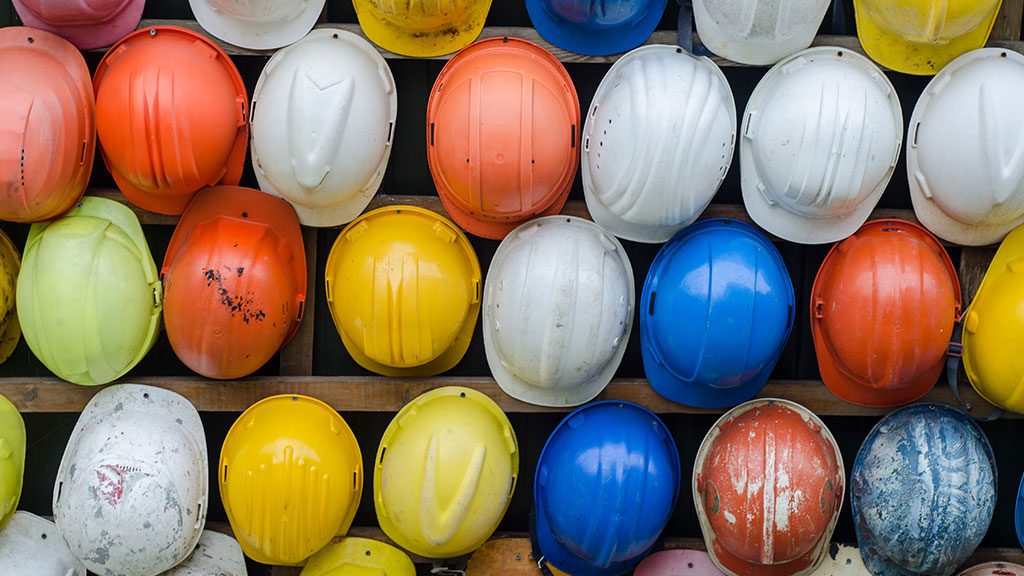Research into the status of 2S/LGBTQ+ workers in the construction trades in Canada suggests some feel isolated, have less job satisfaction and suffer from poorer mental health than other workers.
In fact, said Chloe Halpenny, Social Research and Demonstration Corporation research associate and co-author of the report, the number of 2S/LGBTQ+ workers is so small and the stories so distressing, the job of a researcher conducting the interviews can be heartbreaking.
“I’ve done a couple of projects focused on queer and trans employment experiences in this job where they are interviewed documentary-like, and you say, ‘I’ve got to go have a bit of a cry,’” she said. “It’s really, really hard to hear.”
The report, released in September and titled 2S/LGBTQ+ Populations in the Trades in Canada: Exploratory insights, called for “urgent” action by the construction sector to improve policies and programs for the population.
The data on the numbers of 2S/LGBTQ+ workers came from a Canadian Community Health Survey and Halpenny believes the statistics may underrepresent actual 2S/LGBTQ+ employment in construction.
Most tradespeople (93 per cent) identify as heterosexual men. Only 0.3 per cent identify as heterosexual women, 0.5 per cent as gay men, 0.6 per cent as lesbian women, 0.2 per cent as bisexual men and 0.2 per cent as bisexual women.
There is no data available capturing workers who might be identifying as trans or non-binary, Halpenny notes. Eleven people in the sector were interviewed for the report.
One of them said, “There’s still a lot of reluctance for people to self-identify, so it’s hard to say where they’re working.”
Just as with other underrepresented groups in construction, Halpenny said, a repeated theme was a lack of visibility and representation — the lack of out 2S/LGBTQ+ tradespeople ends up perpetuating itself, reducing the attractiveness of trades careers to others in the community.
Other factors discouraging interest in the construction trades included perceptions of construction as unsafe or unwelcoming, stereotypes about who “fits” in the trades and toxic masculinity, among others.
“Instances of microaggressions, discriminatory hiring practices and negative workplace experiences such as bullying, physical violence and sexual harassment contribute to a hostile environment,” the report stated.
“People perceive or anticipate that going into the trades as an out, visibly queer or trans person, especially if they’re more effeminate or feminine presenting, they’re anticipating that they’re going to be made fun of, that they’re going to be targeted or bullied on a jobsite,” said Halpenny.
The report found significantly lower rates of life satisfaction among 2S/LGBTQ+ workers. Heterosexual men were more likely to report being very satisfied or satisfied with their life, followed by heterosexual women, sexual minority men and sexual minority women. Sexual minority respondents were generally more likely to report higher work stress levels.
“People in a construction job, when they feel included and they feel secure, and they’re working at a workplace that they feel good about, those people love their jobs,” said Halpenny, contributing to retention, she added.
Income gaps between 2S/LGBTQ+ workers and heterosexual men ranged from minus 19 per cent for sexual minority men to minus 22 per cent for sexual minority women.
There were hopeful signs in the study, however. The researchers spoke with stakeholders who were dedicated to ensuring their workplaces were inclusive spaces and found, Halpenny said, “There are pockets of change and folks who are leading the way, and hopefully, those are people that we can look to as evidence that there is an alternative.”
Among over a half-dozen recommendations offered by the stakeholders, training and education was repeatedly highlighted as a critical tool to building a more inclusive culture.
Others included:
Promoting strong leaders who are committed to advancing 2S/LGBTQ+ equity and inclusion.
Supporting 2S/LGBTQ+-specific interventions and initiatives to build a sense of community.
Building meaningful processes to equip decision-makers with the tools to bring change.
Addressing barriers to entry with such strategies as pursuing opportunities for 2S/LGBTQ+ youth, and challenging and shifting stereotypes.
Creating safe and inclusive environments with washroom facilities, PPE, toolbox talks and visible signs of inclusion such as helmet stickers.
Much more research is needed, Halpenny said, given that the interviews conducted so far did not plumb deeply into the experiences of the community.
“We’re kind of just scratching the surface with some of this stuff. But hopefully raising some awareness and starting to generate conversations will be a helpful first step.”
Follow the author on Twitter @DonWall_DCN.









Recent Comments